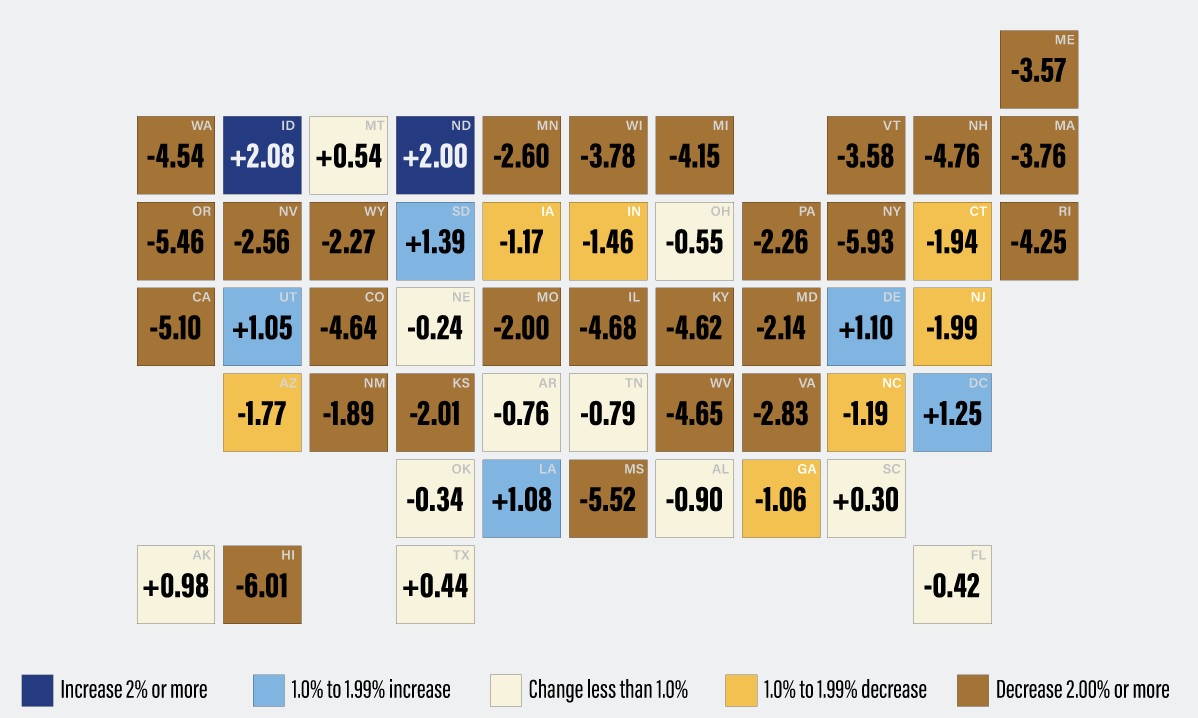
National Center for Education Statistics
Compared to 2019, only Idaho and North Dakota saw enrollment increases over 2% in fall 2022, while the majority of states saw declines.
Enrollment in U.S. schools was fairly steady between 2021 and 2022, but the number of K-12 students remained below pre-pandemic levels, according to new federal data released Monday.
The release, from the National Center for Education Statistics, shows that with nearly 50 million students, enrollment was still 2% less than 2019 figures. Only Idaho and North Dakota saw enrollment increase about 2% over that time period, while multiple states, including California, Mississippi and New York saw declines of at least 5%.
The data confirms earlier state-level figures and research pointing to the loss of students from traditional school districts and a shift toward private schools, homeschooling and newer models, like microschools and hybrid programs. Those trends added to large-scale declines in the number of school-age children that predate the COVID era. All combined, experts say, most districts shouldn’t expect to see growth anytime soon, and many have already announced school closures.
“This national demographic decline has first-order implications for whether many schools can reasonably expect enrollment to rebound,” said Thomas Dee, an economist at Stanford University who tracks pandemic-era enrollment data. As America gets older, he added, “We are seeing its implications for schools — enduring enrollment loss and the corresponding pressure to close schools and layoff staff.”
In December, NCES released data showing a small uptick in private school enrollment over the same time period that public schools saw their largest declines. Later this year, officials will release newer data on students attending private schools as well as those who are homeschooled. But even those figures could leave some questions unanswered.
“We have reasons to expect to see an increase in the number of students being home educated, even though a lot of home education may be unreported,” said Sofoklis Goulas, a researcher at the Brookings Institution who has also analyzed enrollment data.
Despite enrollment remaining relatively flat between 2021 and 2022 — less than a 1% increase — there was still a lot of variation at the state level. Louisiana saw the most growth, with a 5% increase, while several states, including California, Colorado, Illinois and New York, saw declines of at least 4%.
***
Linda Jacobson is a California-based senior writer for The 74, covering Congress, policy, courts, early education and more. Previously, Jacobson reported on education at the Atlanta Journal-Constitution and Education Dive. She was also a reporter and associate editor at Education Week, and served as assistant director of the Education Writers Association.
This story first appeared at The 74, a nonprofit news site covering education. Sign up for free newsletters from The 74.


























